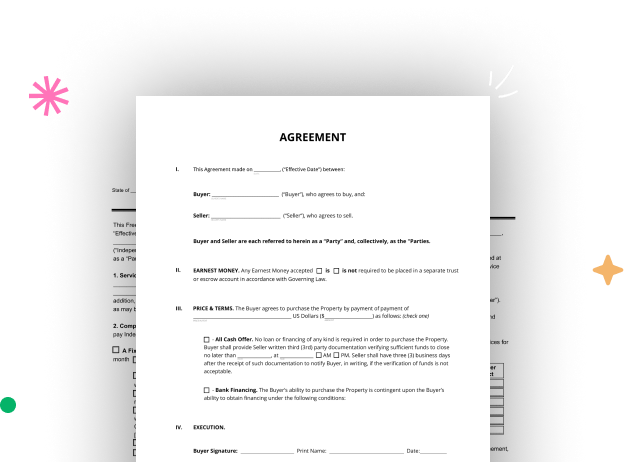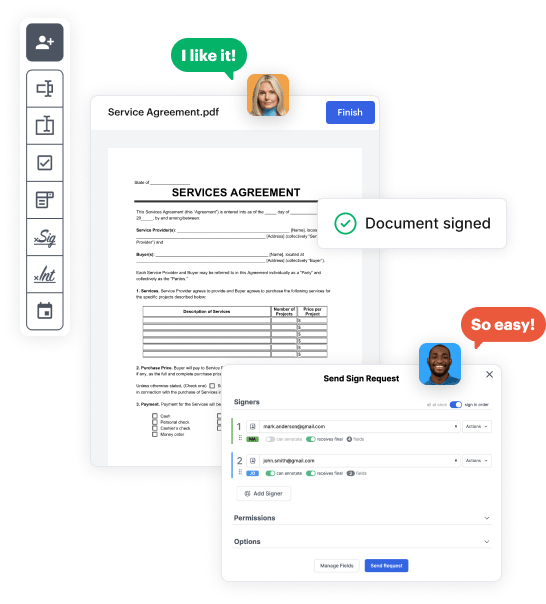

First, log in to your DocHub account. If you don't have one, you can easily register for free.
Once you’re in, head to your dashboard. This is your main hub for all document-centric tasks.
In your dashboard, hit New Document in the upper left corner. Select Create Blank Document to craft the Civil Legal Form from scratch.
Place different fields like text boxes, photos, signature fields, and other elements to your template and assign these fields to certain recipients as needed.
Personalize your document by inserting walkthroughs or any other crucial information leveraging the text option.
Meticulously go over your created Civil Legal Form for any mistakes or essential adjustments. Take advantage of DocHub's editing tools to polish your template.
After finalizing, save your work. You may choose to retain it within DocHub, export it to various storage services, or send it via a link or email.